TIDE Defends Belize’s Southern Blue Frontier
On Tuesday, we took you to Laughing Bird Caye National Park, just off the coast of Placencia, where we got a close-up look at the incredible work being done by the Belize Fund for a Sustainable Future and its partners to protect our precious marine spaces. Well tonight, we’re heading even farther south, this time to the breathtaking Sapodilla Cayes Marine Reserve. There, with support from the Belize Fund, the Toledo Institute for Development and Environment, and the Belize Coast Guard, a dedicated team is working tirelessly to safeguard not just Belize’s borders, but the rich natural treasures they hold. News Five’s Britney Gordon has the story.
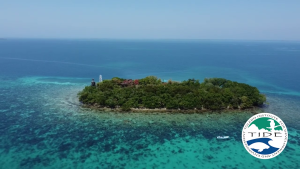 Britney Gordon, Reporting
Britney Gordon, Reporting
Just thirty-seven miles off the coast of Punta Gorda lies one of Belize’s most prized, and most contested, natural treasures: the Sapodilla Cayes. This stunning atoll, rich in marine life, has long been the subject of territorial claims by both Guatemala and Honduras. And with its abundant resources, it’s no surprise that fishermen from across the border often venture into these waters. But there’s a renewed sense of hope for the future of this marine reserve. Thanks to support from the Belize Fund for a Sustainable Future, the Toledo Institute for Development and Environment is on the ground, making sure these protected areas are truly protected. Executive Director Leonardo Chavarria Jr. gives us a closer look at the impactful work TIDE is doing with the help of the Belize Fund.
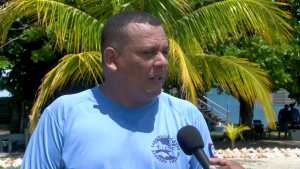
Leornardo Chavarria Jr.
Leornardo Chavarria Jr., Executive Director, TIDE
“Under the Belize Fund Project, what we do is that our rangers are fully equipped, so we have the vessels to undertake effective patrols. We have the different capacity building for rangers under the project and the living facilities. The accommodations that you see here on Hunter’s Caye are all funded by the Belize Fund, and of course other partners that have engaged over the years.”
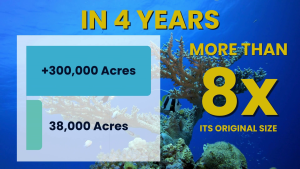 In just four years, the Sapodilla Cayes Marine Reserve has grown massively, from thirty-eight thousand acres to over three hundred thousand. That’s more than eight times its original size. It’s a huge area to manage, but the team at TIDE didn’t back down from the challenge. After spending more than three years studying the region, they officially stepped in to co-manage the reserve in 2023. And get this, they’re doing it all with just seven rangers. That’s right, seven people covering the entire reserve, without any direct presence from the Fisheries Department. So how do they do it? TIDE’s Project Manager, Florencio Coc, gives us a look at how his team is making it happen.
In just four years, the Sapodilla Cayes Marine Reserve has grown massively, from thirty-eight thousand acres to over three hundred thousand. That’s more than eight times its original size. It’s a huge area to manage, but the team at TIDE didn’t back down from the challenge. After spending more than three years studying the region, they officially stepped in to co-manage the reserve in 2023. And get this, they’re doing it all with just seven rangers. That’s right, seven people covering the entire reserve, without any direct presence from the Fisheries Department. So how do they do it? TIDE’s Project Manager, Florencio Coc, gives us a look at how his team is making it happen.
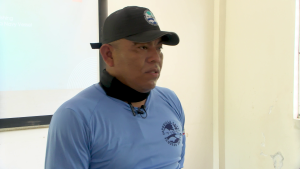
Florencio Coc
Florencio Coc, Project Manager, TIDE
“Our mandate is to execute the fisheries guidelines. That is our mandate. So in terms of anything that has to do with illegal entry, that goes channeled on to the immigration officer. Anything else? Immigration officer or the Coast Guard, because again, the Coast Guard also has a mandate as. As us if we are not present here, the Coast Guard has the legal authority to make arrests the same for immigration. So anything else that falls under the Fair Fisheries, it is us that conducts.”
Protecting the Sapodilla Cayes Marine Reserve isn’t without risk. Many of the fishers who cross into Belizean waters are armed and may resist arrest. That’s why TIDE teams up with the Belize Coast Guard. Twice a day, two Coast Guard officers join TIDE patrols to help keep the team safe. Lieutenant Allen Armstrong explains the vital role they play in these joint operations.
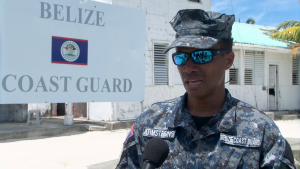
Lieutenant Allen Armstrong
Lieutenant Allen Armstrong, Belize Coast Guard
“We also conduct what we call the Operation Lighthouse, or better known as the Dotted Line Patrol. The Dotted Line patrol is whereby we conduct patrols from here out at Hunter’s Caye all the way to Sarstoon. This is along the equidistance line, so this is patrols that is conducted. At least four times per the month, so it’s one per week. Beside from that, we also conduct what we call the Corona Reef Patrols as well. The Corona Reef Patrol are better known as the Cayman Crown Patrol is also conducted once per week, so these patrol are conducted. Four times for the month as well. So we’re looking at eight patrols at the post guard does within the Cayman Crown, and then along the dotted line for the entire month.”
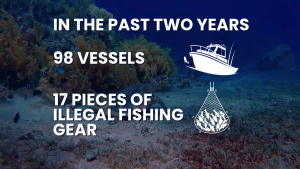 It’s one of the most beautiful, and most vulnerable, locations in Belize’s southern waters. The Cayman Crown area of the Sapodilla Cayes sits right along the border with Guatemala, and that makes it a hotspot for illegal fishing. In just the past two years, authorities have intercepted ninety-eight vessels and seized seventeen pieces of illegal fishing gear, including gill nets and long lines, many of them traced back to this very area.
It’s one of the most beautiful, and most vulnerable, locations in Belize’s southern waters. The Cayman Crown area of the Sapodilla Cayes sits right along the border with Guatemala, and that makes it a hotspot for illegal fishing. In just the past two years, authorities have intercepted ninety-eight vessels and seized seventeen pieces of illegal fishing gear, including gill nets and long lines, many of them traced back to this very area.
Leornardo Chavarria Jr
“One of the primary concerns that we have is the issue of this by nature is a transboundary area. So we have a lot of illegal fishing that is carried out by our Guatemalan and Honduran neighbors. So we have fishing communities from Guatemalan and Honduras who are in close proximity, about forty-five minutes from here. And then they engage in illicit fishing activities. So they use gill nets, which are very destructive. They use long lines. They do night fishing. They use illicit spears for example. And so these type of things are already major concern to us because they do not fish like Belizean. These people, we have like hundreds of fishers that are utilizing these waters and doing so illegally.”
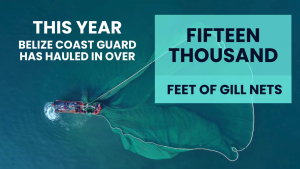 So far this year, the Belize Coast Guard has hauled in over fifteen thousand feet of gill nets, that’s roughly a hundred nets taken out of our waters. And they’re not doing it alone. With support from the Belize Fund through the Government Strategic Allocation program, the Coast Guard has stepped up its game. They’ve added two high-tech drones to their toolkit, these can soar up to thirteen thousand feet and cover distances of up to one hundred and ten miles, giving them a serious edge in spotting illegal activity from the sky.
So far this year, the Belize Coast Guard has hauled in over fifteen thousand feet of gill nets, that’s roughly a hundred nets taken out of our waters. And they’re not doing it alone. With support from the Belize Fund through the Government Strategic Allocation program, the Coast Guard has stepped up its game. They’ve added two high-tech drones to their toolkit, these can soar up to thirteen thousand feet and cover distances of up to one hundred and ten miles, giving them a serious edge in spotting illegal activity from the sky.
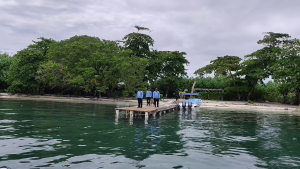 Lieutenant Allen Armstrong
Lieutenant Allen Armstrong
“Of recent, we’ve been using it mostly in what we call area two down south, which is by Barranco. So the drones would, or the drone team would then use these drones to go out, monitor the area, and once we encounter or see any Guatemalan fishers in the area, then of course the patrols would then go out and then intercept these vessels.”
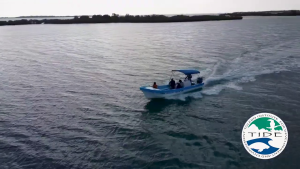 Thanks to support from the Belize Fund, TIDE now has a powerful long-range camera stationed on Hunter’s Caye. It can spot activity up to ten miles away, day or night. On days when the sea is too rough for patrols, this camera becomes an extra set of eyes on the water, helping protect Belize’s marine reserve even when boots can’t be on the ground.
Thanks to support from the Belize Fund, TIDE now has a powerful long-range camera stationed on Hunter’s Caye. It can spot activity up to ten miles away, day or night. On days when the sea is too rough for patrols, this camera becomes an extra set of eyes on the water, helping protect Belize’s marine reserve even when boots can’t be on the ground.
Leornardo Chavarria Jr.
“The Belize Fund has also provided the Belize marine protected areas network of which TIDE is a part of with, allocation for ranger salaries for an additional two year basis. So in other words the Belize Fund currently pays rangers working out here. And likewise, we have a big project that is about to complete in the next year or so, and we are eligible to reapply for another project.”
From north to south, Belize’s ocean spaces are getting a boost, thanks to the Belize Fund. Whether it’s protecting coral reefs, supporting marine patrols, or funding high-tech tools, BFSF is helping organizations across the country keep our waters safe, healthy, and thriving. Britney Gordon for News Five.




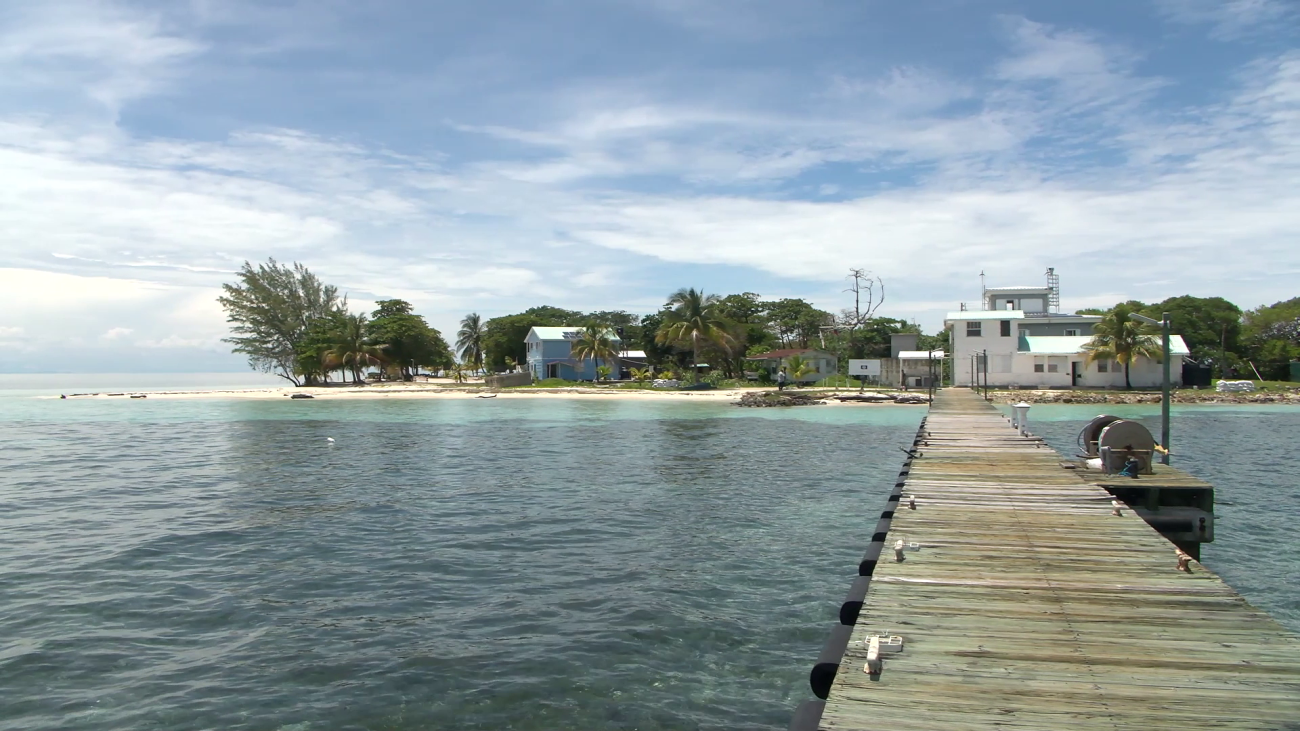

Facebook Comments